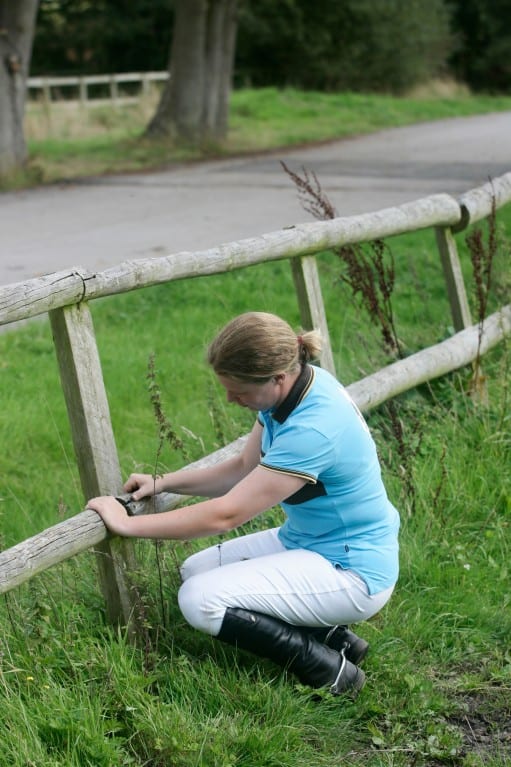Being naturally inquisitive, horses frequently hurt themselves, but is your horse’s environment as safe as it could be?

If there’s a tiny nail or piece of metal sticking out somewhere in your horse’s stable, you can almost guarantee he’ll find it!
And they’re good at damaging their stables and fields, too, so it pays to check them regularly to make sure they’re hazard-free.
Here are a few points to think about while you’re making sure your horse stays in the best of health.
Out in the open
The field can be a hazardous place and the fencing should be checked regularly. Wire is not advisable, particularly barbed wire and sheep fencing.
Post and rail is ideal, but it should be regularly for protruding nails, and damage. Electric fencing can be useful, too, either to split up the field or to fence off less-safe areas of the field. However, it must be tight and not flapping around, and if it’s fencing off less-safe areas, make sure that the horse won’t get through.
While you are out there, check for poisonous plants, sharp stones and holes, too.
Meticulous management
You’ve made sure that your horse’s living quarters are suitably safe, but what else can you do?
Make sure that your stable management is second to none, that your horse has a good routine and that he is fed correctly, to prevent problems such as colic and laminitis.
He should be vaccinated and have regular health checks, too.
You may find that your horse needs protection from boots or bandages – for instance, if he has a tendency to knock himself when being ridden or if he is likely to get overexcited when you turn him out.
If you keep thinking as you work around the yard, ‘is there anything my horse could hurt himself on here?’ then the chances are you’ll start to spot things you’d never thought of before. It’s much better to be over-cautious, as prevention is always better than cure.
When you tie your horse up anywhere, always take a look around to check that the area is safe. Is there plenty of head room, so that if your horse were to suddenly lift his head high, he wouldn’t bang it? Is there anything lying around that he could get himself tangled up in, such as wheelbarrows, yard tools or a grooming kit?
When you’re tying up your horse, make sure you don’t
leave the rope too long so he could get his legs over it. He should always be tied to baler twine, rather than directly to a solid object, and with a quick-release knot.
Keep all hazardous items safely locked away and make sure the feed room door is kept closed so that horses aren’t tempted to break free and help themselves to something that could be potentially harmful, such as unsoaked sugar beet.
If you keep thinking as you work around the yard, ‘is there anything my horse could hurt himself on here?’ then the chances are you’ll start to spot things you’d never thought of before. It’s much better to be over-cautious, as prevention is always better than cure.
Stable conditions
Ensure that any buckets don’t have handles big enough for your horse to catch a leg in.
If he eats from a haynet, make sure the ring is high enough and tie the haynet as high as possible so that when it’s empty, it won’t hang down low enough for your horse to get his legs tangled in.
Never leave your horse loose in the stable with his headcollar on, as he could easily get caught up.















